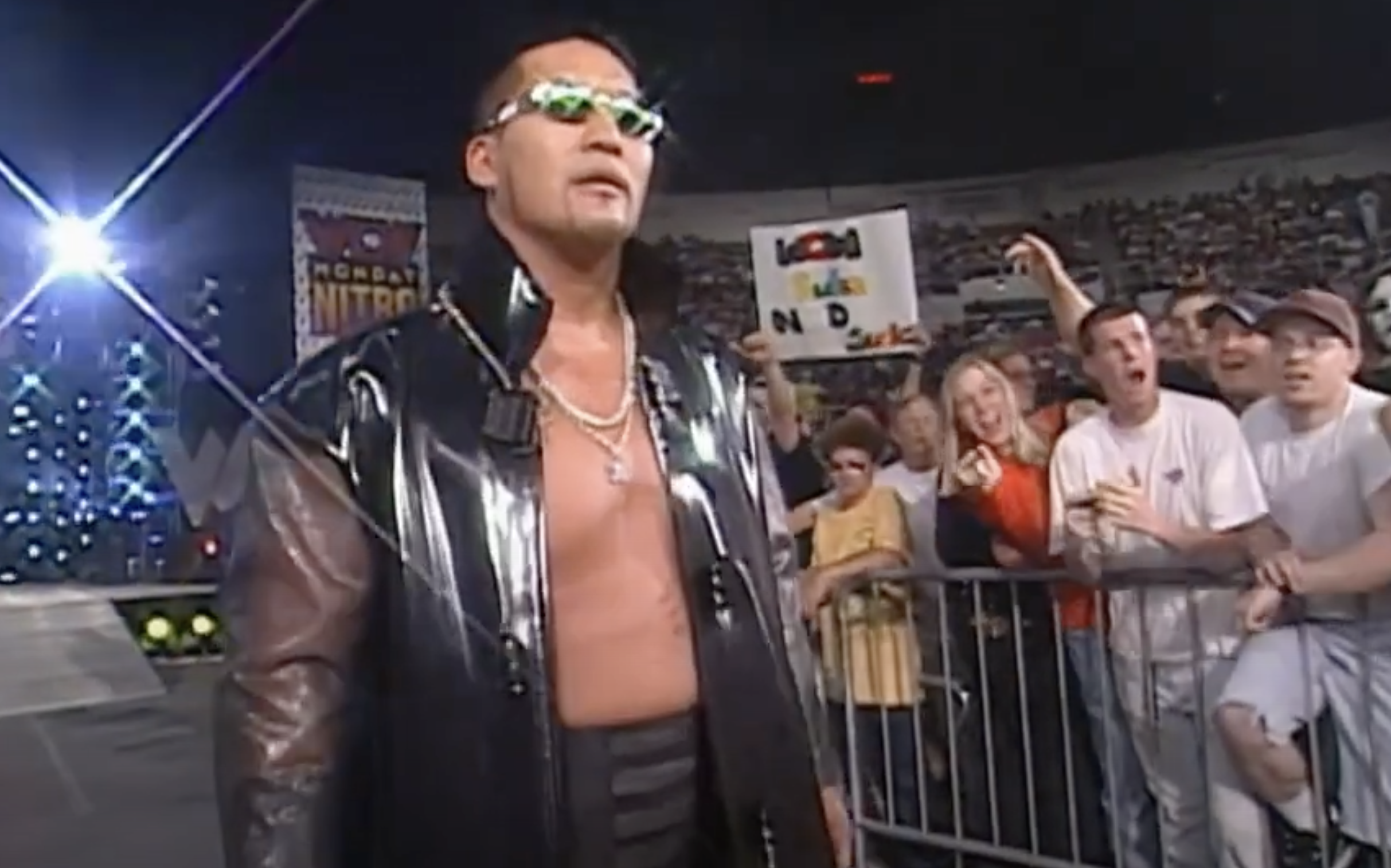If Japanese wrestling ever needed a mob boss, Masahiro Chono filled the role in spades. Born in Seattle but forged in the crucible of New Japan Pro-Wrestling, Chono grew from clean-cut prospect to leather-clad menace, the kind of man who could walk into an arena wearing shades at midnight and make the whole building flinch. For over 25 years, he was NJPW’s dark ace—sometimes champion, often puppet master, always dangerous. Fans called him “Mr. August,” “Mr. G1,” and, when the black coats came out, simply the boss.
This wasn’t just wrestling—it was theater, it was intimidation, it was Chono making you believe that pro wrestling wasn’t entirely on the level.
From Lion Cub to Tokyo Dome Main Events
Chono’s career began in 1984, facing none other than Keiji Mutoh—two kids who would grow into two-thirds of the legendary “Three Musketeers” (with Shinya Hashimoto rounding it out). He looked like a nice guy back then, all earnest effort and youthful hunger. And for a while, he played the part—winning the Young Lions Cup in ’87, jetting across Europe, Puerto Rico, Kansas City, even the Maritimes in Canada. Chono was sharpening the edges, learning how to be a pro in the wrestling world’s back alleys.
By the late ’80s, NJPW had him in the spotlight. He wrestled Lou Thesz in Thesz’s final match. He won the very first G1 Climax in 1991, etching his name on a trophy that would become his personal property. He could’ve stayed the hero, the clean ace. But Chono had something else in mind.
The Black Turn
In 1994, Chono made the heel turn that defined him. Enough with the smiling, enough with waiting for his shot. He slipped on the shades, buttoned up the black coat, and came out looking like a Yakuza enforcer who’d taken a detour into professional wrestling. The fans bought it because he lived it—swaggering, snarling, chewing up young hopefuls who thought they had a chance.
This was the Chono who built nWo Japan, the Japanese branch of WCW’s hottest property. He wasn’t just a member—he was the don, running the stable like a syndicate. His Team Wolf with Hiroyoshi Tenzan and Hiro Saito became the backbone of NJPW’s black-clad army. And when the American nWo needed international flair, there was Chono, standing tall in WCW rings, going toe-to-toe with names like Goldberg.
He didn’t just join stables. He created them. Team 2000. Black New Japan. ChoTen with Tenzan. Chono’s stables were less “groups of wrestlers” and more “street families with grudges.” If you crossed him, you weren’t just fighting Chono—you were fighting an empire.
Mr. G1
Forget Mr. October. Forget Tom Brady in January. In Japan, August belonged to Chono. Five G1 Climax wins—the most of anyone, ever. He turned the summer tournament into his personal hunting ground. Fans started calling him “Mr. August,” and the nickname stuck like sweat to a turnbuckle pad.
Even when his body started breaking down—after neck injuries, shoulder injuries, the mileage of being NJPW’s dark general—he could still summon something special in G1 season. It was a ritual: August arrives, Chono wins.
Champion, Bookerman, Legend
Chono’s résumé isn’t just heel swagger and G1 trophies. He held the IWGP Heavyweight Championship once, the NWA World Heavyweight Championship once, and seven IWGP Tag Team Championships. He also spent time as NJPW’s booker, shaping the stories that would define a generation. In the early 2000s, he even feuded with Chyna in a cross-promotional oddity, proving no opponent was too strange for Chono to handle.
By the mid-2000s, the stable wars slowed down, and Chono leaned into his role as elder statesman. He formed Legend—because of course he did, and because he was one. He didn’t need titles anymore. He had influence.
Outside the Ring
Chono wasn’t just a wrestler. He was a brand. Literally—his clothing line, Aristrist, became a fashion statement in Japan, blending European flair with his signature black aesthetic. He popped up in video games, in TV shows, even in Yakuza Kiwami 2 as himself (because who else could he be but the boss?).
He married Martina Carlsbad in 1991, raised two kids, and still found time to slap comedians on Japan’s No Laughing Batsu Game. In 2017, spinal stenosis forced him under the knife, but the man endured—because Chono always endured.
The Last Word
On February 21, 2023, at Keiji Muto’s retirement show in the Tokyo Dome, the story came full circle. Muto called Chono out for an impromptu match. Two Musketeers, one last dance. Chono locked in the STF—his move, his exclamation point—and won. Then he called it himself: retirement.
The arc was perfect. From young lion against Muto in ’84, to last match against Muto in ’23. Nearly 40 years. Countless fights. More shades than an optometrist’s showroom.
The Legacy of the Man in Black
Masahiro Chono didn’t just wrestle—he styled wrestling. He made sunglasses indoors look like a death threat. He made black coats into championship belts. He turned heel work into an art form, and he kept New Japan’s underbelly alive through decades of change.
He’ll never be remembered as the pure athlete like Mutoh, or the bulldozer like Hashimoto. But Chono? He was the cool one. The boss. The don. The guy who looked you in the eye through tinted glass and made you believe he might actually be dangerous.
Mr. G1. Mr. August. Mr. Black.

